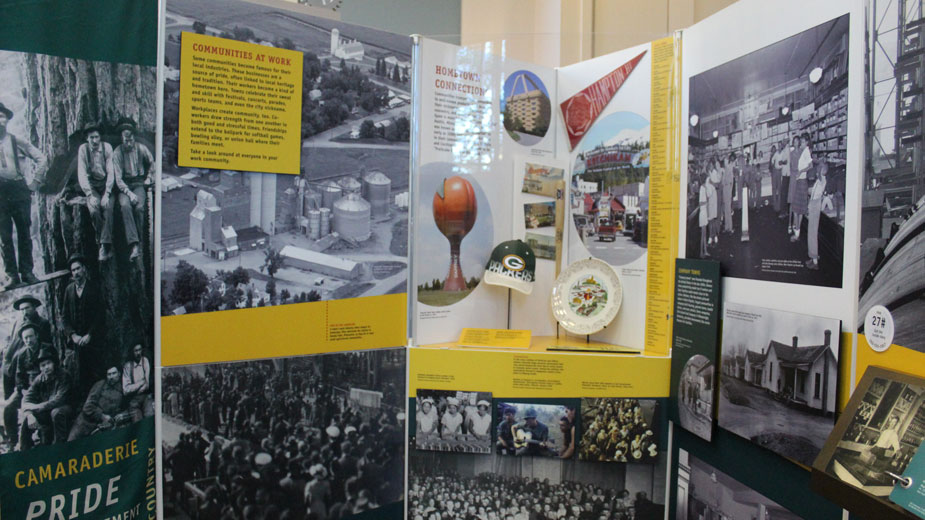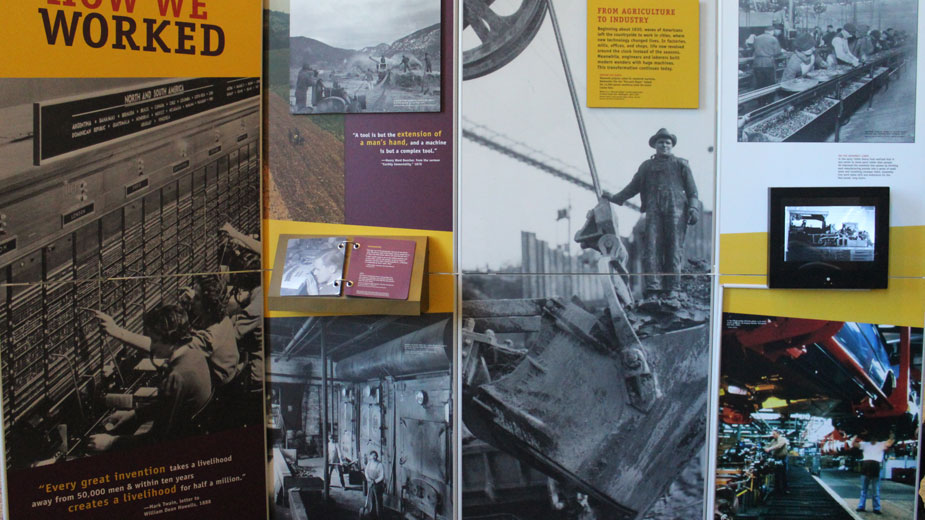Flashback: Steel Museum Showcases How America Worked
YOUNGSTOWN, Ohio – There’s no doubt that the Mahoning Valley takes pride in its history of work. From the Italian immigrants who first settled Brier Hill to the tens of thousands of employees at Youngstown Sheet & Tube Co. to serving as a backdrop for the revitalization of the Midwest, the way the Youngstown area has worked is among its defining features.
But it isn’t just Youngstown that’s seen that pride over the past century. A new exhibit at the Youngstown Historical Center of Industry and Labor showcases the history of modern labor in America, from production lines at Ford to astronauts aboard the space shuttle.
“We have a long and storied history. We have a great deal of pride in our jobs. It helps highlight the role immigrants played in building our country, as well as the progression of safety and safety equipment on job sites,” says Marcelle Wilson, site manager at the museum. “There’s also the different types of jobs. There were ones once solely held by men that are now open to both men and women. Understanding that history enables us to appreciate the past and look toward the future.”
The exhibit is part of the Smithsonian Institution’s Museum on Main Street traveling exhibition program and will be at the Steel Museum through Jan. 18.
“They set the bar and are the pinnacle of what we all hope to achieve,” Wilson says. “By showcasing how people worked, it shares the idea that museums aren’t just places to look at elite history, but a history that’s shared by everyone. It’s social history. It includes women, immigrants, children and it’s multicultural. There are things everyone can relate to.”
One display showcases the ways towns across the United States how shown their pride in the jobs the do, from the Green Bay Packers – named in 1919 for Indian Packing Co. in the city – to the proclamation of Ketchikan, Alaska, as “Salmon Capital of the World.” Five species of the fish find a home in the rivers and inlets around the city, which gave rise to the fishing industry early in its history.
Right next to a Packers hat and photograph of Ketchikan’s archway bearing its slogan is a list of sports teams named for local industry, including the East Liverpool Potters.

“This section, ‘Where We Work,’ ” Wilson continues further into the exhibit, “shows the roles immigrants played in our community, from helping provide food to other services. This really resonates today because of issues around immigration.
“Historically, we’ve always dealt with immigrants in different ways depending on what part of the world they’re coming from and what they can contribute,” she says, pointing to a picture of migrant workers working in a field.
One of the last stations of “The Way We Worked” highlights technology’s role over the course of the 20th century. In a display is a candlestick telephone – one that had to be connected through an operator, before even rotary phones were in use – alongside a typewriter and Blackberry.
“Technology enhances work but can also make it more complicated or challenging. As technology advances, workers have to bring more skills to the table to get their jobs done,” Wilson explains.
On the back side of the panel is a quote from Mark Twain: “Every great invention takes a livelihood away from 50,000 men and within ten years creates a livelihood for half a million.” It helps highlight the way technology has changed the American workplace over the past century, and workers along with it. Elsewhere, a rotating picture shows surgeons in Van Wert, Ohio, with little more than saws, scalpels and bandages, while the reverse is an image of military surgeons in American Samoa, working with a full cadre of medical equipment.
“Some of the surprising things are the images of child laborers, especially when they’re barefoot and dirty,” the museum’s manager continues. “There are also women laborers especially during World War I and II, while men were serving overseas. They were participating in a variety of dangerous and very hard-working jobs. To see those photographs, it really captures the time period.”

To supplement “The Way We Work,” the Steel Museum is also hosting several programs over its course, including hands-on activities for kids and a workshop on clocking making.
Two speakers will give presentations at the museum: Andrew Richmond, president and CEO of Wipiak Appraisals and Consulting and historian, will speak on the migration of America’s furniture-making business from the East Coast to Ohio in the early 1800s, while Martha Pallante, interim dean of the College of Liberal Arts and Social Science at Youngstown State University, will speak on the history of the fire brick industry in Niles.
Richmond will speak 4 to 6 p.m. Nov. 1 and Pallante 4 to 6 p.m. Nov. 7.
“We want families to come in and talk about how they used to work, compared to what they do nowadays,” Wilson says. “We expect them to relate to what work was done by their grandparents or great-grandparents.”
Pictured: Marcelle Wilson, site manager for the Youngstown Historical Center of Industry and Labor.
Copyright 2024 The Business Journal, Youngstown, Ohio.



